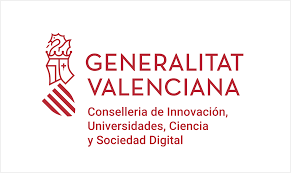Research Projects
2019
Applications and Fundamentals of Microresonator Frequency Combs (MICROCOMB) (MSCA-ITN-2018-ETN)
IP: Pascual Muñoz Muñoz. MICROCOMB is a collaborative research and training network, gathering together 17 European universities, research centers and industrial partners with complementary expertise on microresonator technology and the observation and exploitation of the microresonator frequency combs. Microcombs are emerging as a disruptive technology for realizing precision metrology, frequency and waveform synthesis and optical processing of information on a chip-scale platform. A typical microcomb setting is a microring resonator evanescently coupled with a waveguide mode, which is pumped by a continuous wave laser by means of a non-linear process like four-wave mixing (Kerr nonlinearity). Applications of microcombs for processing information with terabit rates, take advantage of the smaller resonator length and therefore being compatible with higher data transmission rates and also of the broad spectral coverage extending over C, L and U optical transmission bands. Other applications are: astronomical research, molecular spectroscopy, arbitrary wave form generators and RF and THz signal processing and generation. Website: https://www.microcomb-eu.org/

2020
POLO TECNOLÓGICO UPVFAB
IP: Pascual Muñoz Muñoz: The new action continues the previous infrastructure project (“Micro-manufacturing for photonics, electronics and chemistry” GVA / IDIFEDER / 2018/042 (2018-2020). The infrastructure is at the class 100/10000 (ISO 5 / 7) 500 m2 micro-fabrication pilot line / clean room www.fab.upv.es). More specifically, it is intended to complement the installation with the following equipment: 1) (Deposition) Sputter for cylindrical samples, 2) (Attack) Wet banks and attack tanks for samples and wafers up to 6 inches, 3 ) (Attack) Extraction and neutralization systems for wet banks and attack tanks, 4) (Metrology) FTIR equipment with microscope for sample analysis. 5) (Post-process) Microscopic transfer equipment by priming chips from 2-4 inches wafers to 6 inches wafers. The general objective is to develop new technological processes in the work areas of the proposing groups (ITEAM, ITQ, CI2B), specifically: I) integrated photonics, II) integrated catalytic membranes and III) electro-chemical devices.
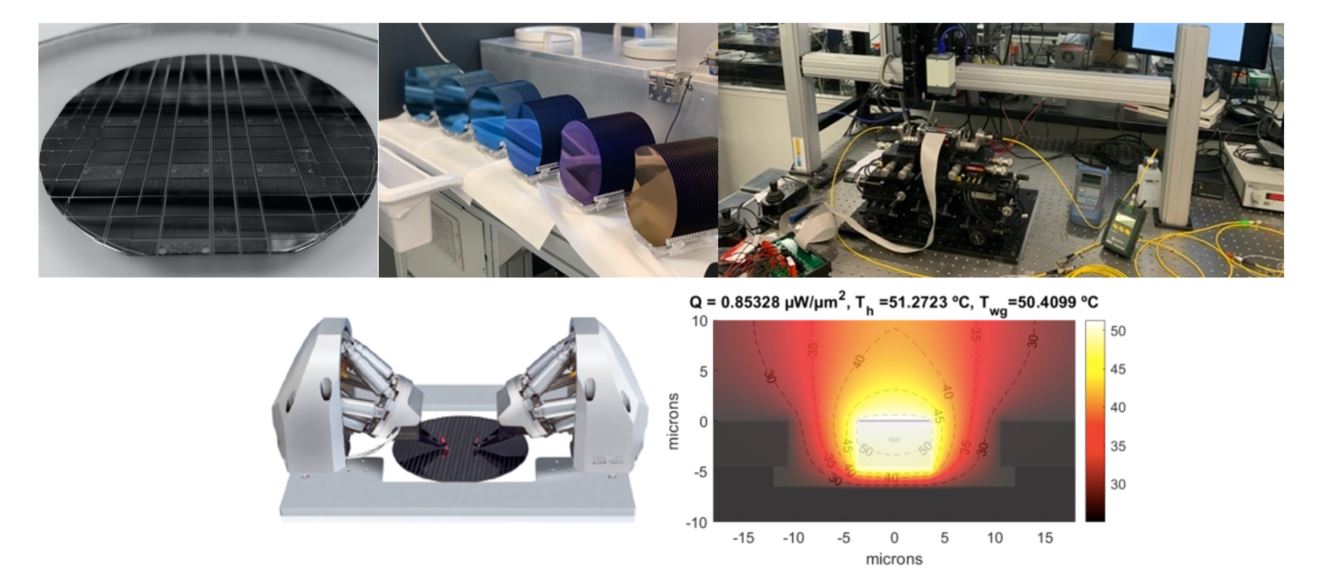
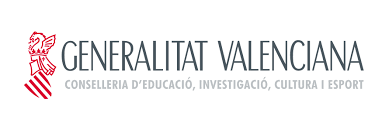

BROADBAND HYBRID SILICON NITRIDE PHOTONIC INTEGRATED CIRCUITS (BHYSINPICS)
Co-IPs: Pascual Muñoz Muñoz / Daniel Pastor Abellán: Integrated photonics has experienced exponential growth in the last 10 years, thanks to the research, development and commercial exploitation of generic technologies, which allow complex photonic systems into a single micro-chip. These technologies cover different parts of the spectrum, depending on the properties of the materials used in manufacturing, for different applications, in the visible (VIS), near (NIR) and mid infrared (MIR) wavelength ranges. However, there is no broadband technology platform, that allows light guiding over VIS, NIR and MIR. Even if it existed, the problem of hybridization with other active technologies, to enable the incorporation of sources and light detectors, would not be solved either. Together with the two previous aspects, the increasing complexity of photonic integrated circuits (PICs) requires advanced characterization methods, beyond those traditionally used. This proposal aims at researching and developing technologies, manufacturing and design processes, alongside the associated characterization methods, to address these three challenges: i) a passive photonic integration platform covering VIS, NIR and MIR, ii) advanced characterization methods and iii) micro-fabrication processes for hybridization with active technologies. The proposal is built upon the group’s track on research, development and technology transfer in the field, and is supported by related public and private sector agents, which are interested in the results of the project. The group holds also a track on training of highly specialized human resources and transfer to the photonics industry in general, and integrated photonics in particular
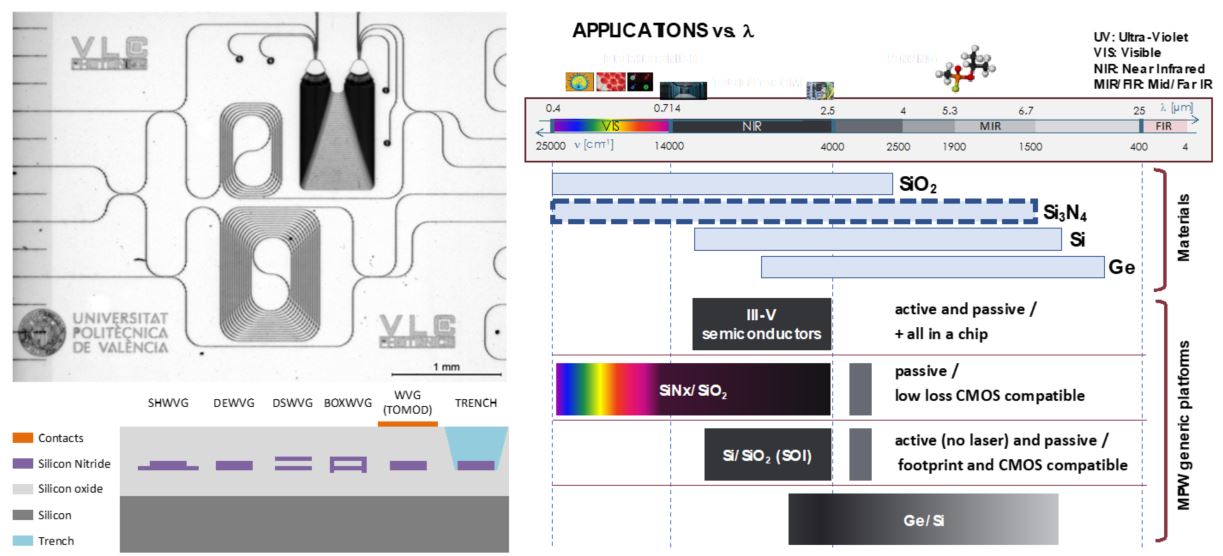

2019
Risk-based Approaches to Good Environmental Status (RAGES)
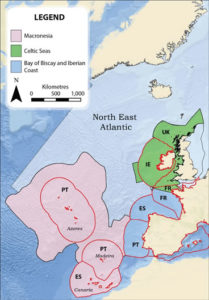 Risk-based Approaches to Good Environmental Status (RAGES) is a two-year European project which aims to support the development and operational implementation of regional indicators, lists of elements and threshold values and integration rules for Good Environmental Status. The RAGES project is comprised of a consortium made up of competent authorities from Ireland, France, Spain and Portugal with (regional and sub-regional) responsibility for the implementation of the Marine Strategy Framework Directive (MSFD) in the North East Atlantic region, comprising the Celtic Seas, Bay of Biscay and Iberian as well as Macronesian sub-regions and will work closely with the OSPAR commsision. The Signal Processing Group - Underwater Acoustic Lab of the iTEAM will work in the RAGES project both: developing machine learning algorithms for the detection of marine mammals and performing acoustic recording campaigns in the Bay of Biscay. The information obtained will be applied at a sub-regional scale to the analysis of energy and noise (Desciptor 11). The findings and best practices will be used to recommend targets for these descriptors as well as to develop a transferrable Standard Operating Porcedure.
Risk-based Approaches to Good Environmental Status (RAGES) is a two-year European project which aims to support the development and operational implementation of regional indicators, lists of elements and threshold values and integration rules for Good Environmental Status. The RAGES project is comprised of a consortium made up of competent authorities from Ireland, France, Spain and Portugal with (regional and sub-regional) responsibility for the implementation of the Marine Strategy Framework Directive (MSFD) in the North East Atlantic region, comprising the Celtic Seas, Bay of Biscay and Iberian as well as Macronesian sub-regions and will work closely with the OSPAR commsision. The Signal Processing Group - Underwater Acoustic Lab of the iTEAM will work in the RAGES project both: developing machine learning algorithms for the detection of marine mammals and performing acoustic recording campaigns in the Bay of Biscay. The information obtained will be applied at a sub-regional scale to the analysis of energy and noise (Desciptor 11). The findings and best practices will be used to recommend targets for these descriptors as well as to develop a transferrable Standard Operating Porcedure. 
2015
2016
2014
2017
Future MWP technologies and applications
| El objetivo global del presente proyecto es proseguir la senda de investigación, desarrollo e innovación de primer nivel de excelencia mundial en el campo de la Fotónica de Microondas iniciada en el proyecto PROMETEO TECNOLOGIAS Y APLICACIONES AVANZADAS Y EMERGENTES DE LA FOTONICA DE MICROONDAS (GVA-2008-092) y continuada en el proyecto PROMETEO TECNOLOGIAS DE NUEVA GENERACION EN FOTONICA DE MICROONDAS (GVA-2013-012). Para ello se propone trabajar en tres líneas de investigación. Las dos primeras son Fotónica de microondas integrada y Técnicas avanzadas para Fotónica de Microondas. Estas líneas, cuyo trabajo ya se comenzó en parte en el proyecto GVA-2013-012 son estratégicas por su aplicabilidad en nuevos campos emergentes y con un impacto potencial masivo a medio plazo, como son las comunicaciones inalámbricas 5G, internet de las cosas, la conducción autónoma, etc. Se pretende aprovechar el elevado grado de conocimiento, madurez y experiencia científica única adquirida por el grupo proponente para mantener el liderazgo mundial en este campo. La tercera línea se centra en el empleo de los resultados obtenidos en las dos anteriores en campos de aplicación que se consideran fundamentales a partir del año 2020. Entre ellos cabe destacar muy particularmente las comunicaciones 5G, el sensado distribuido remoto, internet de las cosas, la conducción autónoma y los sistemas de inspección y vigilancia basados en reflectometría para aplicaciones de seguridad y biomédicas. El grupo proponente, Photonics Research Labs del Instituto Universitario de Investigación de Telecomunicación y Aplicaciones Multimedia (iTEAM) de la Universitat Politécnica de Valencia es líder mundial en el campo de la Fotónica de Microondas y el hilo conductor de su actividad en este proyecto será el de su alto valor estratégico, así como el compromiso de que ésta se realice dentro de la primera línea internacional y, si es posible, sea transferible al sector socioeconómico valenciano, bien a través de cesión de propiedad intelectual o bien mediante la creación de empresas de base tecnológica. |
| Proyecto PROMETEO/2017/103 del programa PROMETEO para grupos de investigación de excelencia financiado por la Conselleria d’educació, investigació, cultura i esport |



